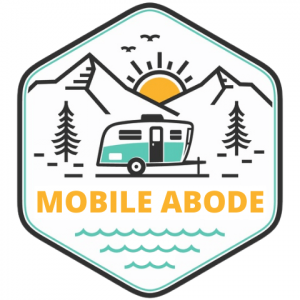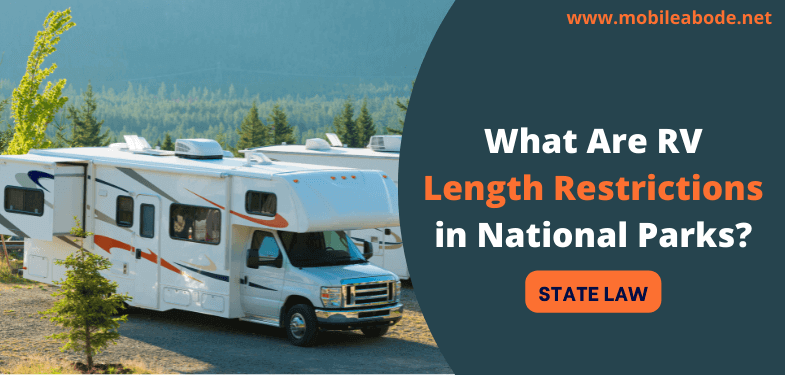Campgrounds have RV length restrictions. Sometimes they are just a general statement, while other campgrounds give the length of each type of RV that is allowed. It’s important to be familiar with the campground’s restrictions before you arrive.
While some people might think that all campgrounds are created equal, this isn’t the case. Each one has its own set of rules and regulations.
In this blog post, we’ll take a look at campground RV length restrictions and what you can do if your RV is too big for a particular campsite.
Campground RV Length Restrictions
RV length restrictions at campgrounds can vary depending on the location. Some campgrounds have a general statement that says “No RVs over 40 feet”, while others will give the length of each type of RV that is allowed.
For example, one campground might allow Class A RVs up to 40 feet, Class B RVs up to 30 feet, and Class C RVs up to 35 feet.
Also, the type of RV you have can make a difference in the length restrictions. For example, some campgrounds allow pop-up trailers but not fifth wheels. And, some campgrounds have a separate area for tent camping that has different RV length restrictions than the main campground.
Be sure to check with the campground before you arrive to find out their RV length restrictions.
Yellowstone National Park RV Length Restrictions
The vast majority of roads in Yellowstone National Park are open to vehicles measuring 21 feet (6.4 meters) or less in length, including trailers.
A few roads have size restrictions for vehicles and/or trailers, as listed below.
- Dunraven Pass: Open to vehicles 20 feet (6.1 meters) or less in length, including trailers.
- Elk Creek: Open to vehicles 25 feet (7.6 meters) or less in length, including trailers.
- Fishing Bridge: Open to vehicles 21 feet (6.4 meters) or less in length, including trailers.
- Mammoth Hot Springs: Open to vehicles 20 feet (6.1 meters) or less in length, including trailers.
Florida State Park RV length restrictions
The average RV is around 8 feet wide and 40 feet long, but there are many different sizes of RVs on the market. The largest RVs can be up to 45 feet long and 13 feet tall.
The majority of Florida state parks can accommodate RVs up to 40 feet in length. Some parks have size restrictions for vehicles and/or trailers, as listed below.
- Big Lagoon State Park: RVs and trailers must be 30 feet or less in length.
- Bulls Bay Preserve: RVs and trailers must be 30 feet or less in length.
- Canaveral National Seashore: RVs and trailers must be 35 feet or less in length.
How do you know if your RV is too long for a certain campground?
The best way to know if your RV is too long for a particular campground is to call the campground ahead of time and ask about their RV length restrictions. You can also look up the campground’s website or Facebook page to see if they have posted any information about RV length restrictions.
Another way to find out is to read online reviews of the campground. People will often mention in their review if they had any problems with the RV length restrictions at the campground.
Are there any solutions to this problem such as portable ramps or extensions?
If your RV is too long for a particular campground, there are a few solutions that you can try.
- One option is to find a portable ramp or extension that you can use to get your RV into the campsite.
- Another option is to look for a different campground that has more lenient RV length restrictions. You can also try to find a campground that has a separate area for tent camping as the RV length restrictions are often different in those areas.
If you are having trouble finding a campground that can accommodate your RV, there are a few companies that specialize in helping people with large RVs find campsites.
- One of these companies is called Jumbo Campers
- Another company is called The Big Rig Resort
Both of these companies have websites that allow you to search for campgrounds by state and RV length.
Portable ramp or Extension
Find a portable ramp or extension that you can use to get your RV into the campsite. There are a few different companies that make these ramps such as EZ Access and PVI. These ramps typically cost between $100 and $200.
What are the consequences of violating a campground’s RV length restriction policy?
There are a few potential consequences of violating a campground’s RV length restriction policy.
- One is that the campground may ask you to leave and find another place to stay.
- Another possible consequence is that you may be charged a higher rate for your campsite, as RVs that are too long can take up more space and cause more wear and tear on the campsite.
- Finally, if you repeatedly violate the policy, you may be banned from the campground altogether.
FAQs – State Park RV Length Restrictions
Does Max RV length include a tow vehicle?
The maximum RV length usually includes the tow vehicle, but it is always best to check with the campground ahead of time to be sure. Keep in mind that some campgrounds have different maximum RV length restrictions for different areas of the campground.
How do state parks measure RV length?
Most state parks measure RV length from the front bumper to the back bumper. However, there are a few exceptions where the state park may measure from the hitch to the back of the RV.
Is a 35-foot travel trailer too long?
A 35-foot travel trailer is typically the longest RV that can be accommodated in most campgrounds. There are a few exceptions where campgrounds may have longer RV length restrictions, but these are relatively rare.
What size RV is allowed in Zion National Park?
The maximum RV length allowed in Zion National Park is 40 feet. RVs that are longer than 40 feet are not permitted in the park.
Because of the length restrictions, it is recommended that you call the park ahead of time to make sure that they will have a campsite available for you.
What size RV is allowed in Glacier National Park?
The maximum RV length allowed in Glacier National Park is 21 feet. RVs that are longer than 21 feet are not permitted in the park.
There are a few reasons for this.
- First, the roads in Glacier National Park are narrow and winding, and longer RVs can have difficulty maneuvering.
- Second, longer RVs tend to block views for other visitors, which is one of the main reasons people come to Glacier National Park.
- Finally, longer RVs can make it difficult for emergency vehicles to get around in the park.
Final Words
If you are new to the RV world or even a seasoned camper, restrictions on RV length can seem confusing and frustrating. By following these tips, you can avoid any problems when trying to find a campsite for your RV.
Also, you’ll be able to navigate campground RV length restrictions like a pro! Do you have any other tips for camping with an RV? Share them in the comments below!

